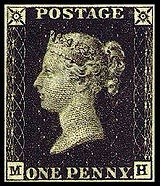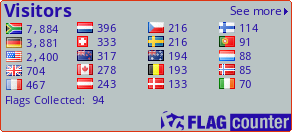About this Cache:
1) The cache can be found at the given coordinates.
2) If you can, please bring along a real stamp and stick it into the logbook along with your entry.
3) The coordinates will bring you to a Rocky Ridge within Heidelberg. You will need to located the container inside the rock wall.
4) The container is locked and you will need to determine the lock combination as depicted below.
Lock Combination
The cache container is locked with a three digit combination lock. All the information can be found in the History of mail section below.
Let’s Say the combination is ABC
A = In the XXth century the word mail began to appear as a reference for a bag that contained letters: "bag full of letter". In what year was that (165A).
B = In the 1Bth century the word mail began to appear as a reference for a bag that contained letters: "bag full of letter". In what year was that (165A).
C = In (what year) 199C, did the U.S. Postal Service authorized the first tests of a secure system of sending digital franks via the Internet to be printed out on a PC printer.

............................................
The History of Mail
The word “mail” comes from the Medieval English word male (spelled that way until the 17th century, distinct from male), which was the term used to describe a traveling bag or pack. The French have a similar word, “malle” for a trunk or large box, and “mála” is the Irish for a bag. In the 17th century the word mail began to appear as a reference for a bag that contained letters: "bag full of letter" (1654). Over the next hundred years the word mail began to be applied strictly to the letters themselves, and the sack as the mailbag. In the 19th century the British usually referred to mail as being letters that were being sent abroad (i.e. on a ship), and post as letters that were for localized delivery; in the UK the Royal Mail delivers the post, while in the USA the US Postal Service delivers the mail. The term e-mail (short for "electronic mail") first appeared in 1982. The term snail-mail is a retronym to distinguish it from the quicker e-mail. Various dates have been given for its first uses.
Modern mail is organized by national and privatized services, which are reciprocally interconnected by international regulations, organizations and international agreements. Paper letters and parcels can be sent to almost any country in the world relatively easily and cheaply. The Internet has made the process of sending letter-like messages nearly instantaneous, and in many cases and situations correspondents use electronic mail where previously they would have used letters. Though the volume of paper mail continues to increase, the number of first class mail pieces sent in the United States peaked in 2001.
In the United States, private companies such as FedEx and UPS compete with the federal government's United States Postal Service, particularly in package delivery. Different mailboxes are also provided for local and express service. (The USPS has a legal monopoly on First Class and Standard Mail delivery.)
Some countries have organized their mail services as public limited liability corporations without a legal monopoly.
The worldwide postal system comprising the individual national postal systems of the world's self-governing states is co-ordinated by the Universal Postal Union, which among other things sets international postage rates, defines standards for postage stamps and operates the system of International Reply Coupons.
In most countries a system of codes has been created (they are called ZIP Codes in the United States, postcodes in the United Kingdom and Australia, and postal codes in most other countries), in order to facilitate the automation of operations. This also includes placing additional marks on the address portion of the letter or mailed object, called "bar coding." Bar coding of mail for delivery is usually expressed either by a series of vertical bars, usually called POSTNET coding, or a block of dots as a two-dimensional barcode. The "block of dots" method allows for the encoding of proof of payment of postage, exact routing for delivery, and other features.
The ordinary mail service was improved in the 20th century with the use of planes for a quicker delivery. The world's first scheduled airmail post service took place in the United Kingdom between the London suburbs of Hendon, North London, and Windsor, Berkshire, on 9 September 1911 Some methods of airmail proved ineffective, however, including the United States Postal Service's experiment with rocket mail.
Receipts services were made available in order to grant the sender a confirmation of effective delivery. Mail going to naval vessels is known as the Fleet Post Office (FPO) and to Army or Air Force installations use the city abbreviation APO (Army Post Office or Air Force Post Office).
Worldwide the most common method of prepaying postage is by buying an adhesive postage stamp to be applied to the envelope before mailing; a much less common method is to use a postage-prepaid envelope. Franking is a method of creating postage-prepaid envelopes under licence using a special machine. They are used by companies with large mail programs such as banks and direct mail companies.

The Penny Black, the world's first postage stamp
In 1998, the U.S. Postal Service authorized the first tests of a secure system of sending digital franks via the Internet to be printed out on a PC printer, obviating the necessity to license a dedicated franking machine and allowing companies with smaller mail programs to make use of the option; this was later expanded to test the use of personalised postage. The service provided by the U.S. Postal Service in 2003 allows the franks to be printed out on special adhesive-backed labels.
In 2004 the Royal Mail in the United Kingdom introduced its SmartStamp Internet-based system, allowing printing on ordinary adhesive labels or envelopes. Similar systems are being considered by postal administrations around the world.
When the pre-paid envelope or package is accepted into the mail by an agent of the postal service, the agent usually indicates by means of a cancellation that it is no longer valid for pre-payment of postage. The exceptions are when the agent forgets or neglects to cancel the mail piece, for stamps that are pre-cancelled and thus do not require cancellation and for, in most cases, metered mail. (The "personalised stamps" authorized by the USPS and manufactured by Zazzle and other companies are in fact a form of meter label and thus do not need to be cancelled.)
HAPPY HUNTING!!

............................................
|
FTF Honours
|
|
............................................